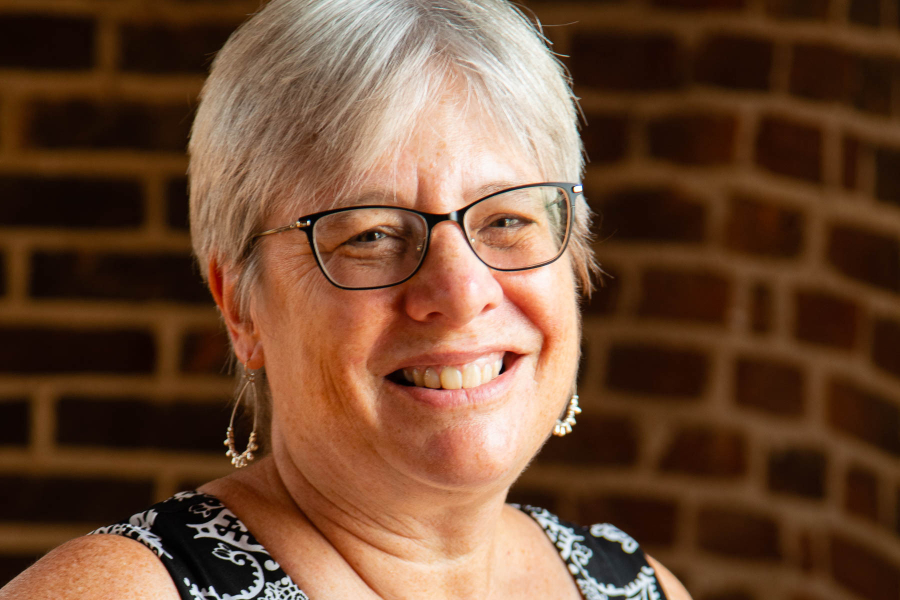My Clean Water Story: Carin Bisland
Chesapeake Bay Program's Branch Chief tells a tale of two waters

I had the privilege of growing up on the shores of two different waters. The first and most memorable is on the western shores of Cayuga Lake, one of the Finger Lakes in upstate New York, where my great-great grandparents bought a summer cottage for my great grandparents over 100 years ago.
For six weeks of every summer, I spent time fishing, swimming and playing in Cayuga Lake with friends and family. My grandfather took the temperature of the lake from our dock every day he was there and tracked it on a huge piece of graph paper on the wall in the “sun porch” of our cottage. With that graph paper, we could see the day to day, month to month and year to year variations in the water temperature. With that, I learned about prevailing winds and which wind direction would bring in rough waters and cooler lake temperatures.
It was also why I dipped my toe into the advocacy world as a little girl and wrote my first letter to the editor about a proposed thermo-nuclear power plant being sited on our lake that could impact the water temperatures and affect the living resources that depended on colder waters. (The power plant was never built—due in large part to my letter, I’m sure).
The second shore I grew up on was at our home along the eastern shore of Weems Creek in the Chesapeake Bay watershed. As a kid, I spent the summer days that I wasn’t at the lake catching blue crabs off our dock—netting larger male crabs, chicken-necking with a string, or snagging a pair of mating blue crabs (also known as doublers) that were clung to the piling. Whether I was swimming and rowing a boat or sailing with my family, there was always something to do on the water.
Experiencing life on two waters helped me to appreciate the differences between them. I could observe how the tides were present on Weems Creek but absent on Cayuga Lake, the different species of fish and shellfish found in brackish water versus fresh water, the wide and expansive watershed of the Chesapeake Bay versus the small and steep watershed of Cayuga Lake. On some days, I could wake up to see the sunrise over Cayuga Lake and end the day watching it set over Weems Creek.
Then, in June of 1972 things changed. Tropical Storm Agnes took a rare turn into the Chesapeake Bay, traveling along the route I had traversed so many times going to our family’s cottage on Cayuga Lake. Agnes swept up the Chesapeake, followed the Susquehanna (seemingly mimicking our drive along Route 15 North) and stopped somewhere north of Cayuga Lake. It wiped out the underwater grasses in Weems Creek as well as those in much of the Bay, flooded houses, businesses and roads along the Susquehanna floodplain, and came right up to the floorboards of our family cottage on Cayuga Lake.
Tropical Storm Agnes did more than destroy our dock and disrupt our summer plans in 1972. For years after, the fishing wasn’t as good and the crabs didn’t seem as big and plentiful. The watermarks on the homes and businesses we passed on our trip to the lake for years to come were reminders of the flooding that impacted so many people in the Susquehanna floodplain.
The experiences I have from my childhood—exploring and playing on the water, resisting a proposed nuclear power plant, witnessing Tropical Storm Agnes—all equally contributed to me being open to the opportunities that got me to where I am today, doing my part to restore and protect the Chesapeake Bay and its living resources. I learned at an early age that human actions made our waters more vulnerable to extreme events, but it is equally true that our actions can help keep our waters resilient.
It is because of these experiences that I have spent my career working collaboratively with people, organizations and governments to find ways to conserve the best, improve the degraded and be on the lookout for new threats like climate change, emerging pollutants or the impact of unplanned growth and development. It is why today, I focus my attention on promoting restoration practices that provide multiple benefits, such as forests, wetlands and other nature-based solutions.

Comments
There are no comments.
Thank you!
Your comment has been received. Before it can be published, the comment will be reviewed by our team to ensure it adheres with our rules of engagement.
Back to recent stories